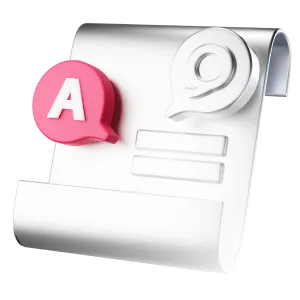A faulty camshaft position sensor can cause your car to stall, burn too much gas and drive with hesitation.
How much does it cost to replace a camshaft position sensor?
To replace a bad sensor, it will cost $30 to $151 for parts, plus tax and fees. Labor will run you around $110 to $174, depending on where you take your car for service. Some cars have more than one camshaft position sensor, depending on the complexity of the engine.
What is a camshaft position sensor?
The camshaft position sensor plays a role in the ignition timing and fuel mixture of the engine. Sensors are crucial to the engine’s performance and efficiency.
The camshaft position sensor monitors how fast the camshaft rotates and sends data to the car’s electronic control module, or ECM, indicating that engine parts are in the right place at the right time so it can run smoothly.
In modern cars, the ECM tracks and gathers data from the sensors in the vehicle, and then using this data, it can adjust engine components to enable peak performance and fuel efficiency. This computer determines the engine’s timing of the spark and how much fuel is injected.
How long does it take to replace a faulty camshaft position sensor?
Replacing a sensor could take a technician under an hour to a few hours to diagnose and replace the sensor. The time it takes also depends on your vehicle’s make and model.
What are the signs of a faulty camshaft position sensor?
Here are some symptoms to look out for that might indicate your vehicle has a defective camshaft position sensor.
- Check engine light is on
- Hard starting
- Poor idling
- Engine misfires
- Smell of gasoline
- Poor fuel economy
- Stalling
- Hesitation when in drive mode
What happens if I don’t replace my faulty camshaft position sensor?
Your car could stall while you’re driving, potentially causing you to get into an accident. You’ll want to replace a bad sensor as soon as possible to ensure your safety and that your vehicle runs efficiently. If you delay getting it replaced, not only do you risk getting into an accident, the faulty sensor won’t be able to send the data needed for the for engine to run smoothly, which could lead to significant damage to the engine.
Can I fix this issue myself?
You can replace the camshaft position sensor yourself, but it’s better to go to a technician.
If you’re comfortable working on cars and want to fix it yourself, you’ll need an engine code reader and a new sensor to do the job. You’ll also need your owner’s manual. You can buy an engine code reader online or at most auto parts retailers for $10 and up, not including tax.
Here are the steps to take:
- Park your car and turn it off.
- Disconnect the car battery.
- Remove the air filter housing.
- Check your car’s manual to determine the location of the camshaft position sensor.
- Remove the sensor’s bolt. Then remove the sensor.
- Install the new camshaft position sensor and tighten the bolt.
While you could do this yourself, diagnosing the issue properly is better off in the hands of a professional. A proper diagnosis will help you address the bad sensor or sensors, and other failing parts of the car, so you can avoid further issues. The ECM records your car’s series of fault codes, which a technician can access when they run diagnostics.
A failing camshaft position sensor is a serious issue, so you’ll want to replace it as soon as possible.

Andrea Richard is a writer and editor with nearly 15 years of experience crafting content for a variety of industries. In writing for Jerry, Andrea’s mission is to deliver relatable and informative content so readers can better understand the costs associated with car ownership and car leasing. A native Floridian and a road trip enthusiast, Andrea first learned to drive on a Honda Accord when CDs were still a thing. She has served on the Society of Professional Journalists Florida board of directors and volunteers as a judge for national journalism contests. Her work has earned several awards for feature writing, investigative reporting and branded content campaigns.

Phil Metzger is a personal finance editor and writer with more than 30 years of experience editing and writing content across a variety of industries. In writing and editing for Jerry, Phil’s mission is to help car owners better understand their vehicles and the costs associated with car ownership. Before joining Jerry, Phil worked as a writer and editor for newspapers, magazines, television radio and online news. His work has appeared in many major publications and websites over the years, including a series he edited that was a finalist for a Pulitzer Prize.








